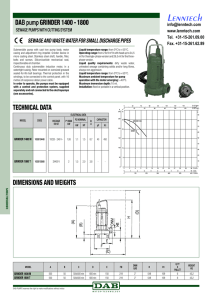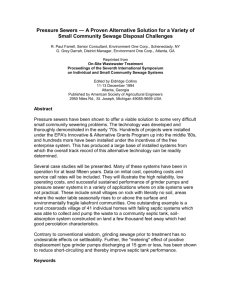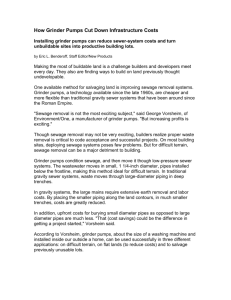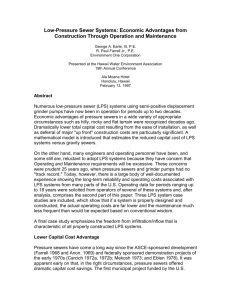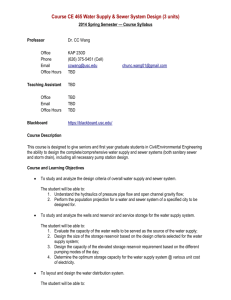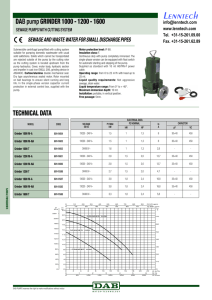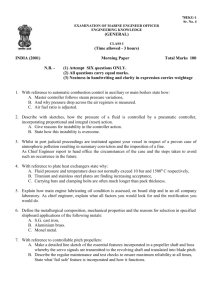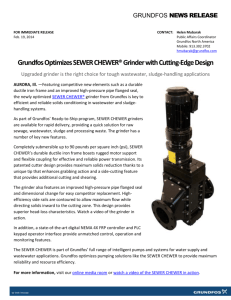Successful Applications of Pressure sewers and Grinder Pumps
advertisement
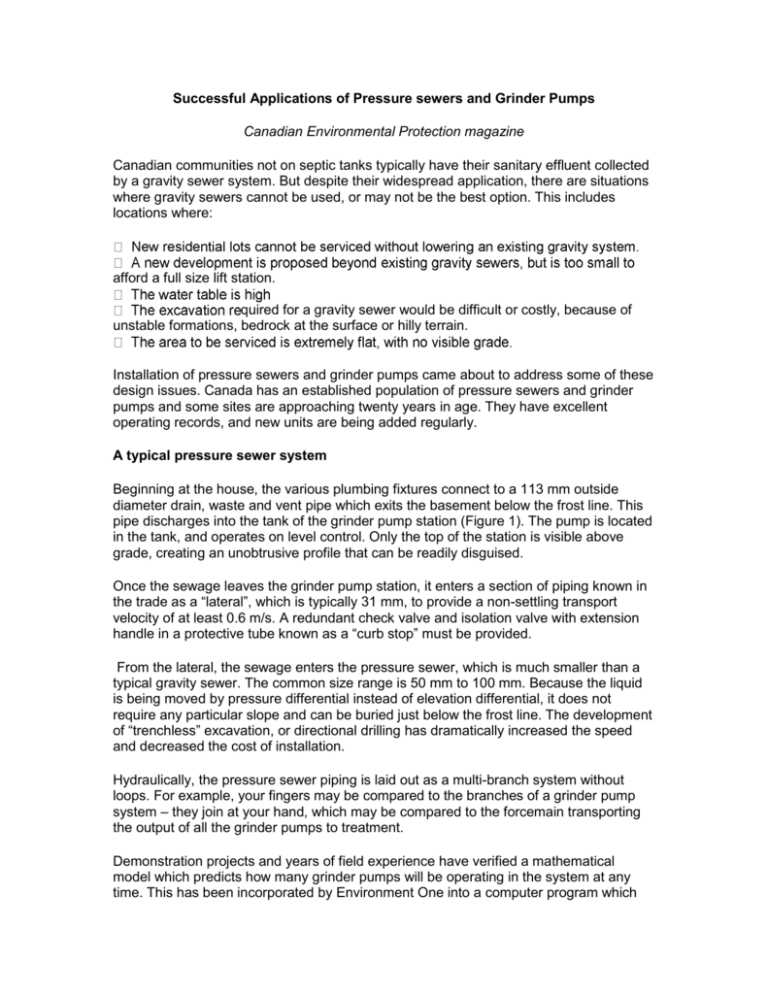
Successful Applications of Pressure sewers and Grinder Pumps Canadian Environmental Protection magazine Canadian communities not on septic tanks typically have their sanitary effluent collected by a gravity sewer system. But despite their widespread application, there are situations where gravity sewers cannot be used, or may not be the best option. This includes locations where: afford a full size lift station. quired for a gravity sewer would be difficult or costly, because of unstable formations, bedrock at the surface or hilly terrain. Installation of pressure sewers and grinder pumps came about to address some of these design issues. Canada has an established population of pressure sewers and grinder pumps and some sites are approaching twenty years in age. They have excellent operating records, and new units are being added regularly. A typical pressure sewer system Beginning at the house, the various plumbing fixtures connect to a 113 mm outside diameter drain, waste and vent pipe which exits the basement below the frost line. This pipe discharges into the tank of the grinder pump station (Figure 1). The pump is located in the tank, and operates on level control. Only the top of the station is visible above grade, creating an unobtrusive profile that can be readily disguised. Once the sewage leaves the grinder pump station, it enters a section of piping known in the trade as a “lateral”, which is typically 31 mm, to provide a non-settling transport velocity of at least 0.6 m/s. A redundant check valve and isolation valve with extension handle in a protective tube known as a “curb stop” must be provided. From the lateral, the sewage enters the pressure sewer, which is much smaller than a typical gravity sewer. The common size range is 50 mm to 100 mm. Because the liquid is being moved by pressure differential instead of elevation differential, it does not require any particular slope and can be buried just below the frost line. The development of “trenchless” excavation, or directional drilling has dramatically increased the speed and decreased the cost of installation. Hydraulically, the pressure sewer piping is laid out as a multi-branch system without loops. For example, your fingers may be compared to the branches of a grinder pump system – they join at your hand, which may be compared to the forcemain transporting the output of all the grinder pumps to treatment. Demonstration projects and years of field experience have verified a mathematical model which predicts how many grinder pumps will be operating in the system at any time. This has been incorporated by Environment One into a computer program which can model any piping layout. The program calculates the friction head based on the predicted number of operating pumps and adds the static head. This yields the discharge pressure required at each pump. The pumps are the positive displacement type, rated for continuous operation at any pressure between a negative and 42 m. (centrifugal pumps would respectively run out and shut off under these conditions.) Typical pipe would be polyvinyl chloride or high density polyethylene material in standard dimension ratio 11 or 13.5 wall thickness. The successful operation of grinder pumps in treatment plants of most types has been documented, including aerated lagoons, activated sludge plants, trickling filters, rotating biological contactors and constructed wetlands. Reduced capital cost John Brooks Company retained a consulting engineer to prepare the report Cost Analysis of GP 2000 Low Pressure Sewer System. Four residential developments constructed with gravity sewers were examined to determine if grinder pumps would have been a realistic alternative. One of these (Case D) was a 12 lot project where a lift station was installed. The cost of the pressure sewer system is only 53% of the cost of the gravity system. The report concludes that any small development where a lift station is required will find pressure sewers and grinder pumps to be a very cost-effective alternative. Another development studied in the report (Case A) turned out to be an illuminating study of infiltration, which is defined as surface runoff which enters the sewer system. Consider a 16 lot subdivision with an area of 11,000 sq. m, serviced by a gravity sewer 200 mm in diameter and 230 m long. Sanitary effluent production is determined by the calculation (350 l/day per person) x (3 persons per residence) = 16,800 litres/day. Infiltration is estimated from the formula I = 0.283 x D x L, where I = infiltration, D = the pipe diameter = 200 mm and L = the pipe length = 230 m. From this the infiltration flow is 13,000 litres/ day, which is 77% of the sanitary flow, or 44% of the combined flow. The infiltration allowance almost doubles the design flow, with a predictable effect on capital and operating costs. But a grinder pump system does not need this allowance. It is a closed system and surface runoff cannot enter it. Grinder pumps may be installed close to houses on private property, and become part of the homes. The average residential user can expect a life of 9-10 years before the first service call, and units occasionally last as long as 17 years. Service is not expensive, especially when divided by the number of years of operation.
